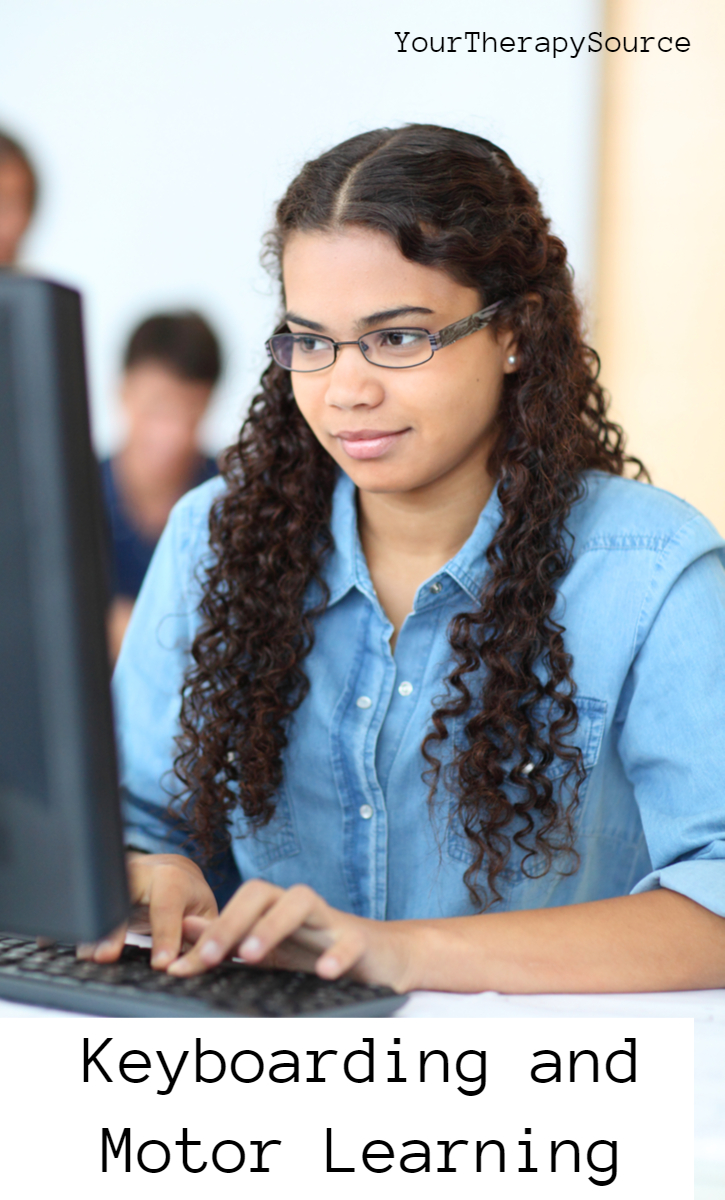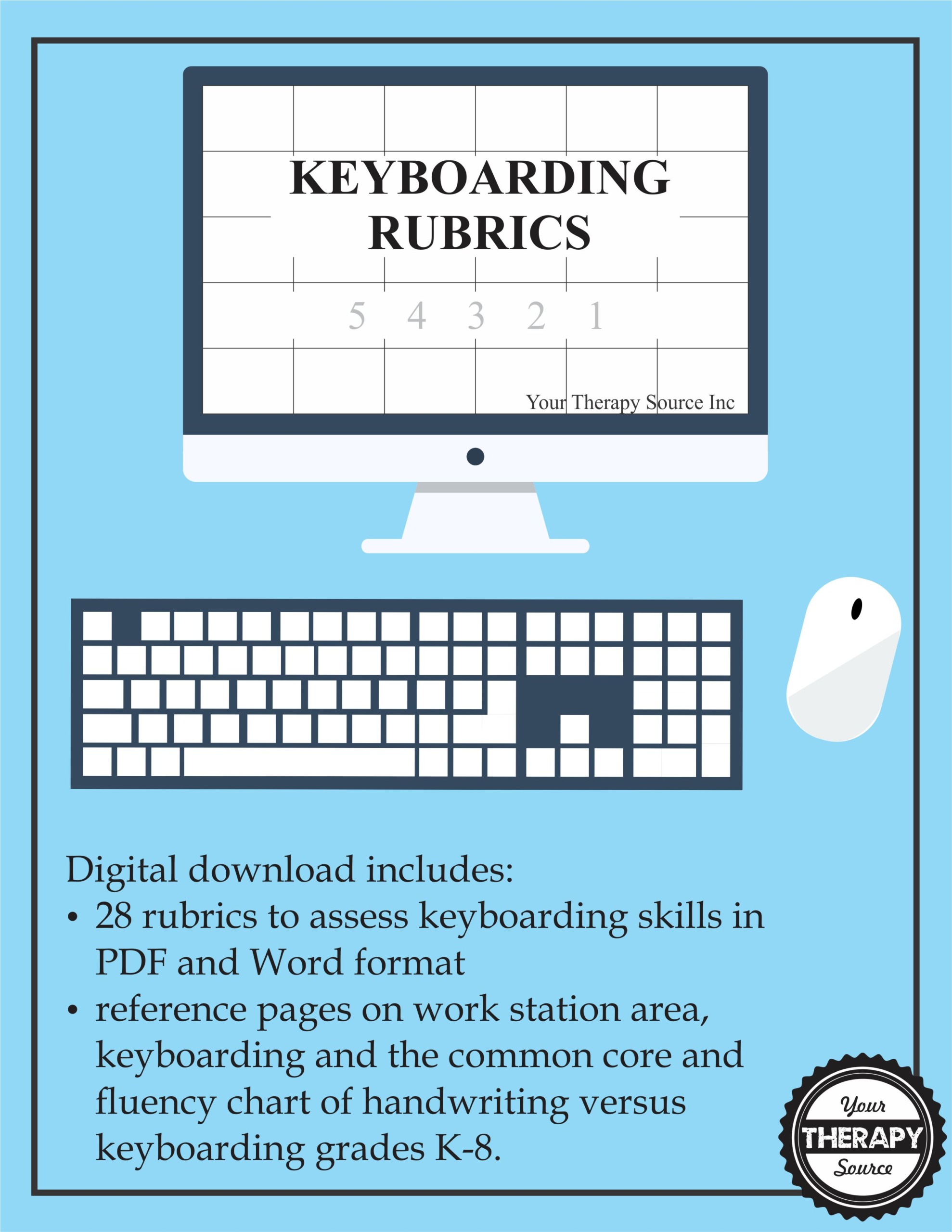Keyboarding and Motor Learning

Keyboarding is a complex task that requires students to internalize motor sequences in order to become proficient. Students need to use visual and kinesthetic feedback to locate and utilize the correct keys to produce written work. Starting with cogntion and vision, motor memory and self-correction, students slowly become efficient at keyboarding. Keyboarding and motor learning involve three stages: cognitive, associative and autonomous development.
Cognitive Stage of Keyboarding and Motor Learning
At first, students understand the idea of the movement required but can not complete the skill over and over again. They try to understand the steps needed and internalize effective strategies. Strategies that are ineffective should get abandoned. The student moves forward to develop an effective pattern using the appropriate strategies for successful keyboarding. Practicing the movement patterns of the keys with visual feedback and altering patterns when necessary is the start of acquiring the skill.
Associative Stage of Keyboarding and Motor Learning
The associative stage is also known as the retention stage. The motor skills that were learned during the cognitive stage are continuously fine-tuned and internalized. Students begin to use kinesthetic feedback more than visual feedback. This is the stage when practice is of utmost importance.
At first, students may need to learn and practice skills in small parts later transferring the skills into a whole task. The goal of this stage is for practice time to result in the skill becoming internalized and the cognitive demands of keyboarding are reduced.
Autonomous Stage of Keyboarding and Motor Learning
The last stage of keyboarding and motor learning is the autonomous stage. Here is when the student relies only on kinesthetic feedback. Students progress and require less visual cues for finding the keys. Keyboarding speed and accuracy improve with practice time and improvements in muscle memory. During this autonomous stage, keyboarding becomes more automatic. The skills can be executed even while multitasking. This results in the student being able to devote more attention to the thought process of writing and composing informational text.
Conclusion
Keyboarding and motor learning evolve throughout three stages: cognitive (initial practice and learning), associative (fine-tuning and internalizing the skills) and autonomous (keyboarding becomes more automatic).
Collecting Data on Keyboarding Proficiency
As students move along the motor learning stages of keyboarding, collecting data is an important step to monitor progress.
Keyboarding Rubrics digital download includes 28 rubrics to assess keyboarding skills in PDF and Word format. Also includes 3 references pages on workstation area, keyboarding and the common core and fluency chart of handwriting versus keyboarding K-8.
This is an electronic book of 28 rubrics to assess keyboarding skills. A rubric is a scoring guide to judge performance on a specific task. Have you ever wanted to quantify general keyboarding skills, operating the mouse, word processing or keyboarding skills by grade level? Keyboarding Rubrics can be used as an assessment tool to quantify an individual’s written productivity. By using the rubric, each individual can be scored based on the same criteria
Keyboarding Rubrics Table of Contents:
GENERAL INFORMATION ON RUBRICS
SUGGESTED USES AND HOW TO SCORE THE RUBRICS
KEYBOARDING AND THE COMMON CORE GRADES 3-12
HANDWRITING AND KEYBOARDING FLUENCY REFERENCE CHART
PROPER POSITIONING FOR KEYBOARDING
BEGINNER SKILLS FOR KEYBOARDING
BASIC SKILLS FOR KEYBOARDING
OVERALL KEYBOARDING
OPERATING THE MOUSE
WORD PROCESSING
PRE-KINDERGARTEN: KEYBOARDING
KINDERGARTEN: KEYBOARDING
TYPING NAME
FIRST GRADE: KEYBOARDING
SECOND GRADE: KEYBOARDING
THIRD GRADE: FORM, PRODUCTION AND FLUENCY
THIRD GRADE: WORD PROCESSING
FOURTH GRADE: FORM, PRODUCTION AND FLUENCY
FOURTH GRADE: WRITING APPLICATION
FOURTH GRADE: WORD PROCESSING
FIFTH GRADE: FORM, PRODUCTION AND FLUENCY
FIFTH GRADE: WRITING APPLICATION
FIFTH GRADE: WORD PROCESSING
SIXTH GRADE: FORM, PRODUCTION AND FLUENCYSIXTH GRADE: WRITING APPLICATION
SIXTH GRADE: WORD PROCESSING
SEVENTH GRADE: FORM, PRODUCTION AND FLUENCY
SEVENTH GRADE: WRITING APPLICATION
SEVENTH GRADE: WORD PROCESSING
EIGHTH GRADE: FORM, PRODUCTION AND FLUENCY
EIGHTH GRADE: WRITING APPLICATION
EIGHTH GRADE: WORD PROCESSING
Some suggested uses of Keyboarding Rubrics are:
- assessment at initial evaluation and annual reviews
- pre and
post therapy session - progress reports
- establish entrance or exit criteria for therapy
- creating measurable goals
FIND OUT MORE ABOUT KEYBOARDING RUBRICS.
Read more about keyboarding:
Read 5 Evidence-Based Factors that Effect Handwriting Speed.
Read results from the handwriting versus keyboarding survey.
Download FREE Keyboarding Words Per Minute Goal Tracker.
Read more on workstation positioning.
Read research on Manuscript, Cursive or Keyboarding.
Reference: Donica, D. K., Giroux, P., & Faust, A. (2018). Keyboarding instruction: Comparison of techniques for improved keyboarding skills in elementary students. Journal of Occupational Therapy, Schools, & Early Intervention, 1-15.




